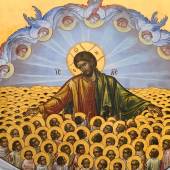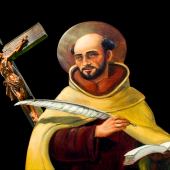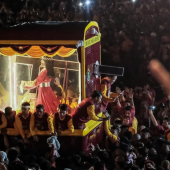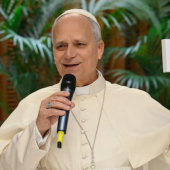“Je suis l’Immaculée Conception” – Mary to St. Bernadette
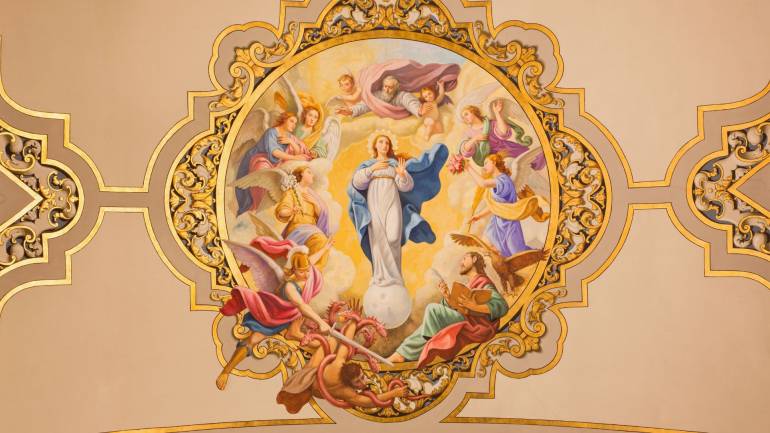
How does Pope Francis describe the Catholic Church in the Philippines? How does the Vicar of Christ see the role of the Filipino people in the universal Church? What are his expectations from us?
These questions may find a fitting answer in his letter, dated November 15, 2018, given during the 60th anniversary of the dedication of Manila Cathedral in the same year.
Pope Francis tribute to the Filipinos. The Holy Father, whom we fondly call “Lolo Kiko,” told us in this letter, dated November 15, 2018, that “indeed, the noble Church in the Philippines now stands among the great Catholic nations in the entire world.” In the Latin text of the original official communication, it goes like this:
Revera, nunc nobilis Philippinarum Ecclesia inter maiores totius orbis catholicas communitates constituitur (Franciscus, Epistula, Thomae Aquinati Manyo S.R.E. Cardinali Maeda (die XV mensis Novembris, MMXVIII).
The fact that the Philippines is Marian and the Filipino is a loyal devotee of Mary is a major part of our nobility. For good reason, we are known across the globe as un pueblo amante de Maria, “a people in love with Our Lady.”
Over a hundred of the cathedrals, shrines, and parishes across the archipelago honor the Immaculate Conception, more than sixty are dedicated to Our Lady of the Holy Rosary, while many parishes and chapels carry various Marian titles like Mother of Perpetual Help, Assumption of Mary, Our Lady of Lourdes, Our Lady of Carmel, and others.
Hyperdulia and Theotokos. To the Blessed Virgin Mary, we give the highest possible tribute, called hyperdulia in Greek. After all, “Mary is the only person who carried Jesus for nine months in her womb (March 25 to December 25), one or two years in her arms, and forever in her heart.” So, how on earth will Jesus not allow us to honor His mother that much? Therefore, in order to honor her, the Catholic calendar provides the joyful celebrations of the “Word was made Flesh” in Mary’s womb, its preparation, and its accomplishment “in the fullness of time” (Galatians 4:4).
I venture to say that we cannot celebrate the Annunciation—the holy conception of Jesus in Mary’s womb—without celebrating the Immaculate Conception, nor can we celebrate Christmas without celebrating the Nativity of Mary. Can a child be conceived and born without a mother?
How can there be an expiatory sacrifice without a victim? How can there be death without flesh to be nailed and blood to be poured out? If Mary, the divinely appointed Theotokos, gave us the Saving Victim to be crucified, it is just inconceivable to talk of Salvation History, particularly the Paschal Mystery, without including the divinely designed role of Mary.
St. Anselm of Canterbury (1033–1109). Because she gave birth to the only blameless Man, Mary had to be without sin herself. Her Immaculate Conception is God’s way of preparing Mary to assume her role as Theotokos. Nine hundred years ago, St. Anselm of Canterbury (1033–1109) wrote about Mary:
The world was corrupted and tainted by Original Sin. Now, the whole universe rejoices with new loveliness. All creation has been restored to its splendor through a woman named Mary, who is immaculately conceived. The woes of our first parents have been transformed into joy. God, in desiring to save the whole of humanity, fell in love with a woman and prepared her to become the Mother of His Son.”
In 1661, Pope Alexander VII, through the papal bull Sollicitudo, provided the theological basis of the dogma of the Immaculada Concepcion in these solemn words: “… The preservation of Mary’s soul in its immediate creation and infusion into the body” (in Latin, in primo instanti creationis atque infusionis in corpus).
First Fall and Original Sin. At the time of human fertilization, the parents only produce the body. God intervenes in the process, directly creating and infusing the human soul, and naturally uniting it with the body. At that very instant, at the union of the soul with the body, human life begins and the transmission of Original Sin occurs. Due to the First Fall, the event narrated in the Book of Genesis, every soul that is infused into the human body, upon union, inherits the Original Sin.
Adam and Eve are our real, not mythical, First Parents, who committed the First Fall. “It was through one man [Adam] that sin came into the world, and through sin death” (Romans 5:12). Because every human being has inherited Original Sin, Baptism for children or infant Baptism is a necessary act on the part of Christian parents.
Saints Anne and Joaquim. God created Mary’s soul, exempted from Original Sin, and infused it into the body generated by Saints Anne and Joaquim. Therefore, the singular privilege of the Immaculate Conception may be narrated in this simple way: when Mary’s father, Saint Joaquim, and her mother, Saint Anne, produced her body by procreation, God directly created and infused Mary’s soul into the body at the precise moment of her conception in Saint Anne’s womb, free from Original Sin.
In 1830 in Paris, Our Lady chose to appear to Saint Catherine Labouré (1806-1876), a French professed sister of the Daughters of Charity of Saint Vincent de Paul. In the Miraculous Medal entrusted to the saint, the following is inscribed: “O Mary conceived without sin, pray for us who have recourse to thee” (in the original, O Marie conçue sans péché, priez pour nous qui avons recours à vous).
The Catholic Dogma. On December 8, 1854, Pope Pius IX solemnly declared the Catholic dogma of the Immaculate Conception through an infallible ex-cathedra papal bull Ineffabilis Deus. All humankind inherited original sin, and the only exemption is Mary.
In 1858, Our Lady appeared to St. Bernadette Soubirous, a 14-year-old peasant girl, in Lourdes, France, saying, “Je suis l’Immaculée Conception.”
The Assumption of Mary into heaven, both body and soul, is a logical and most natural consequence of the Immaculate Conception. People die and, a few moments after death, their bodies and corrupt and become food for the worms due to sin. But the womb that formed Jesus for nine months (Theotokos) was made spotless and, since she was spotless, “her body was preserved from corruption after her earthly life” (Dogma of Assumption as proclaimed by Pope Pius XII in 1950).
Pope Francis has said that, in her lifetime, Mary herself was a missionary, for she brought love into the world through the birth of Christ. Coming of age, “gifted to give,” the Filipino Church has assumed an awesome commitment to “share with other nations the Faith we, the Filipino people, have so bountifully received.”
By virtue of Baptism, every Filipino is a priest, prophet, and shepherd to others, wearing the vest of the triple function of a true Christian. Therefore, we cannot but become active players in the New Evangelization “for the transmission of the Christian Faith” (Pope Francis, Evangelii Gaudium, 14–18).
With Jesus and Mary in our hearts, let us become dynamic missionaries who bring God’s love into the world.
Sancta Maria, Mater Dei
Ora pro nobis peccatoribus
Nunc et in hora mortis nostræ. Amen.
Radio Veritas Asia (RVA), a media platform of the Catholic Church, aims to share Christ. RVA started in 1969 as a continental Catholic radio station to serve Asian countries in their respective local language, thus earning the tag “the Voice of Asian Christianity.” Responding to the emerging context, RVA embraced media platforms to connect with the global Asian audience via its 21 language websites and various social media platforms.









